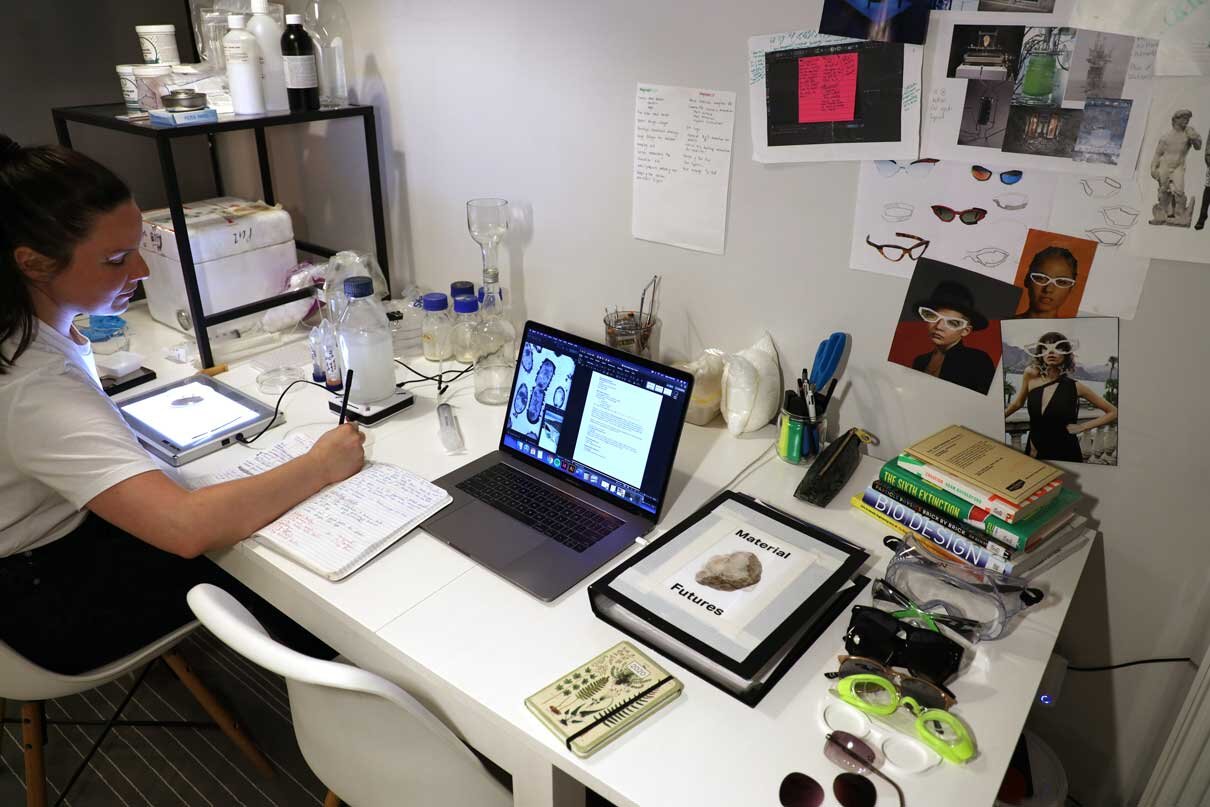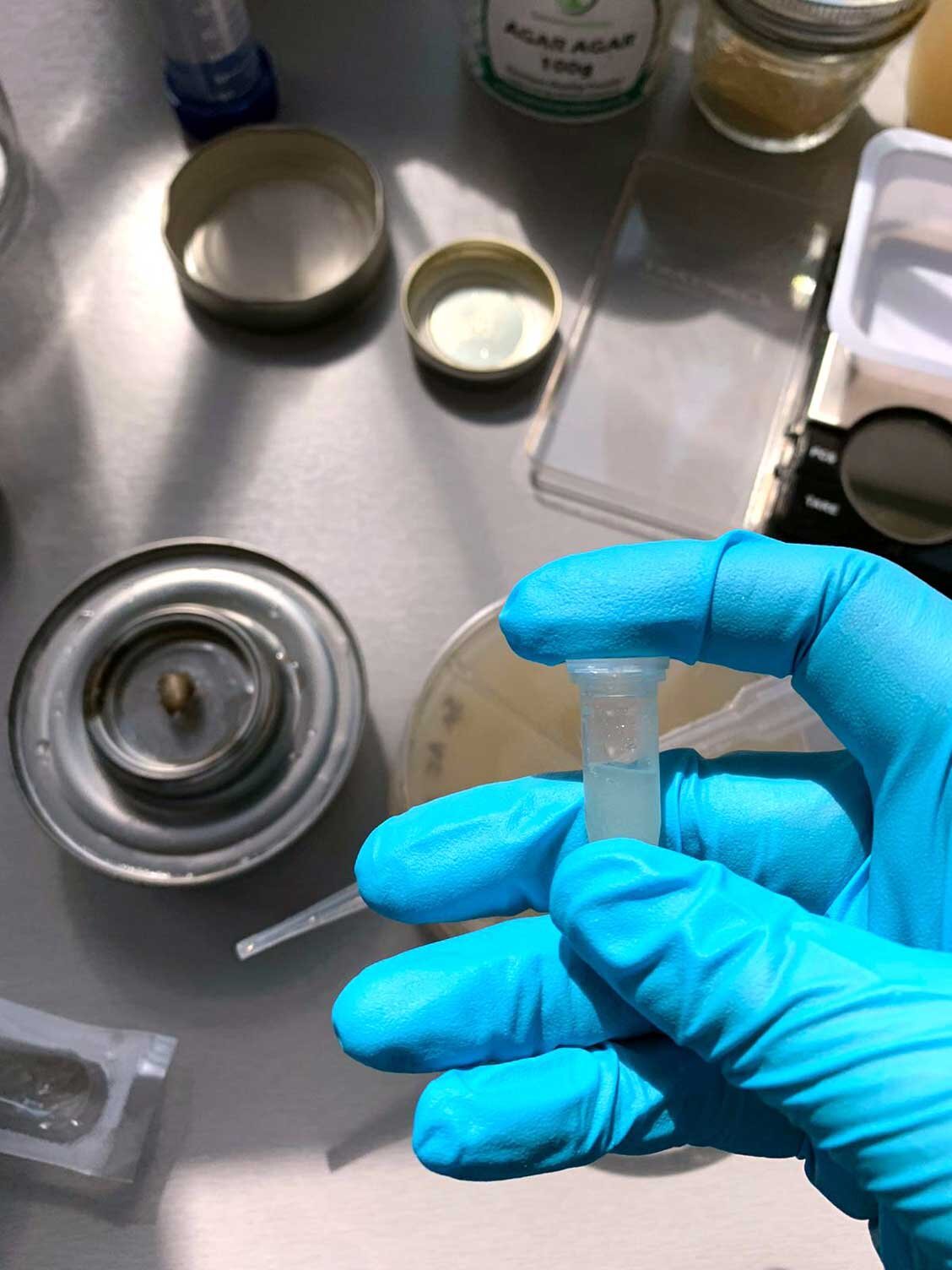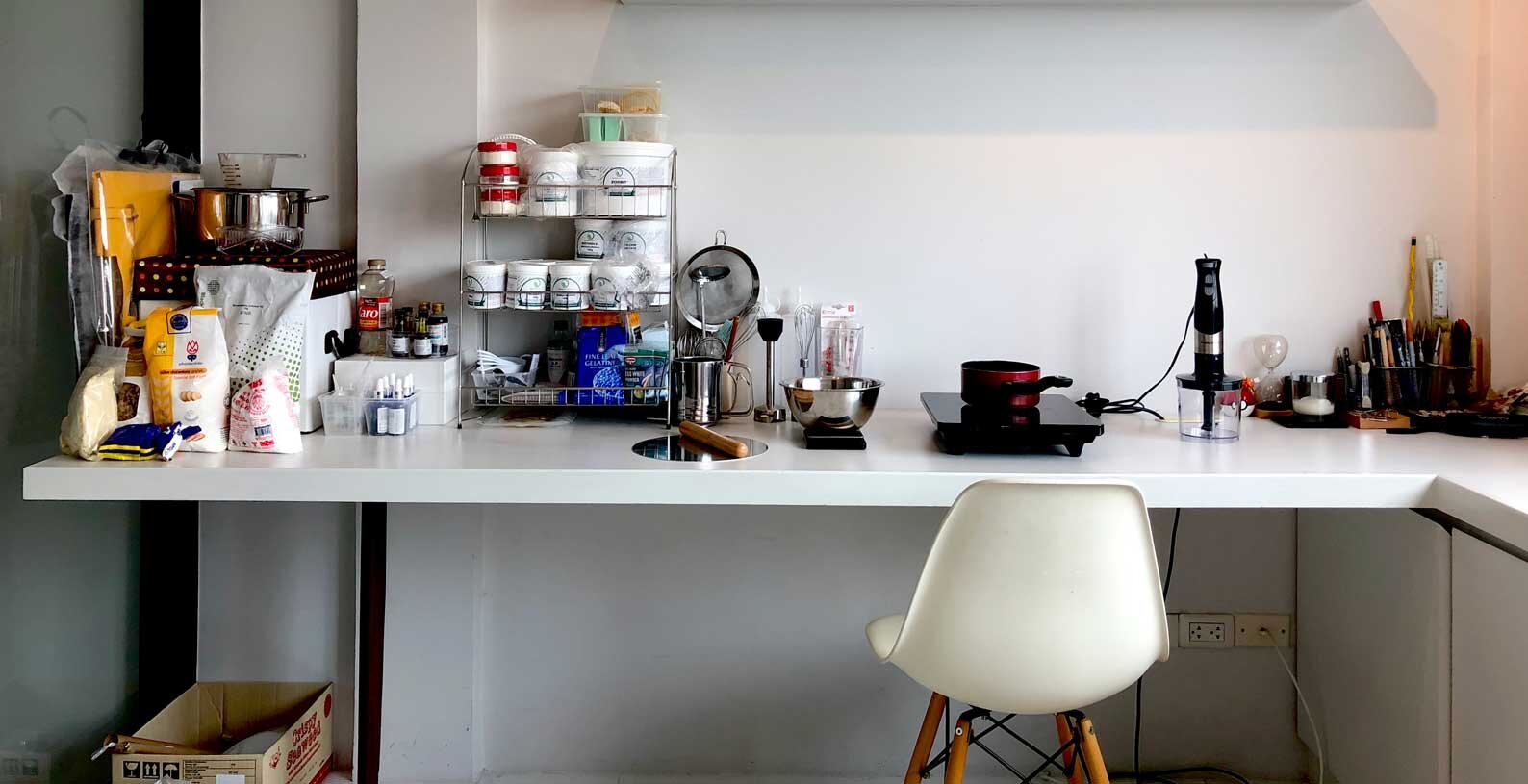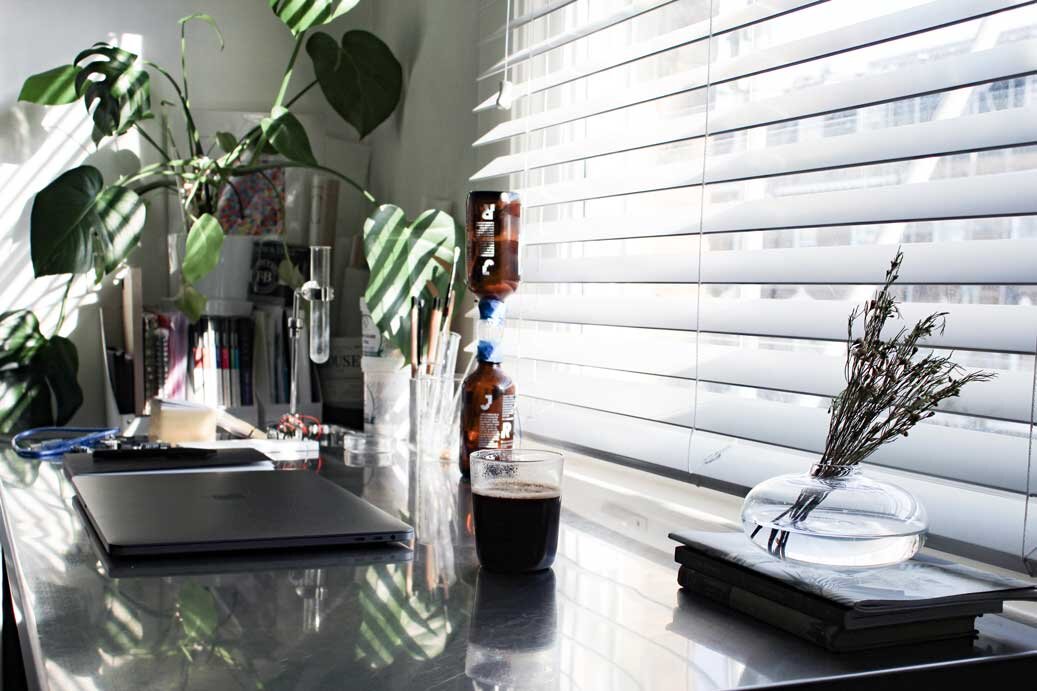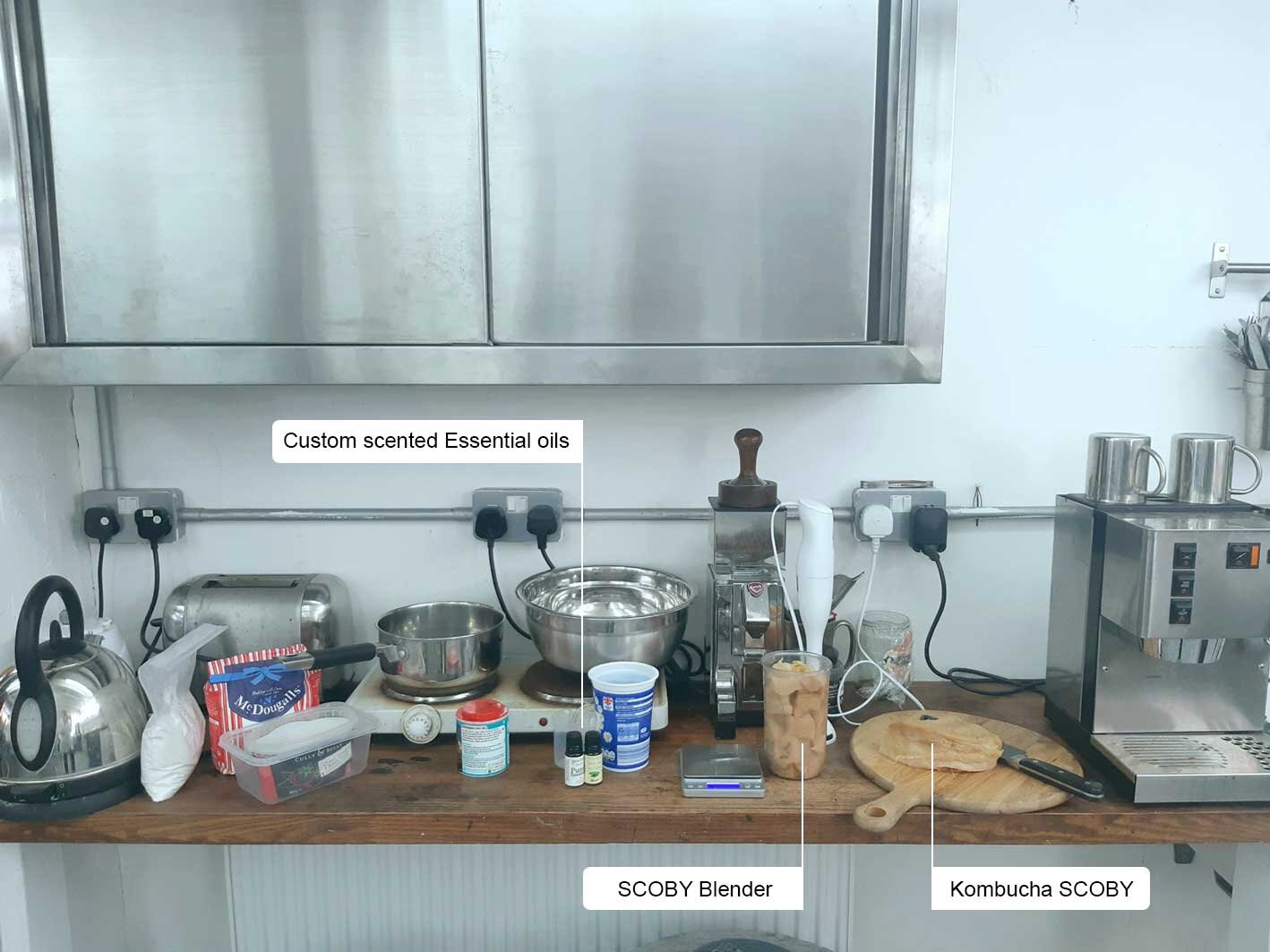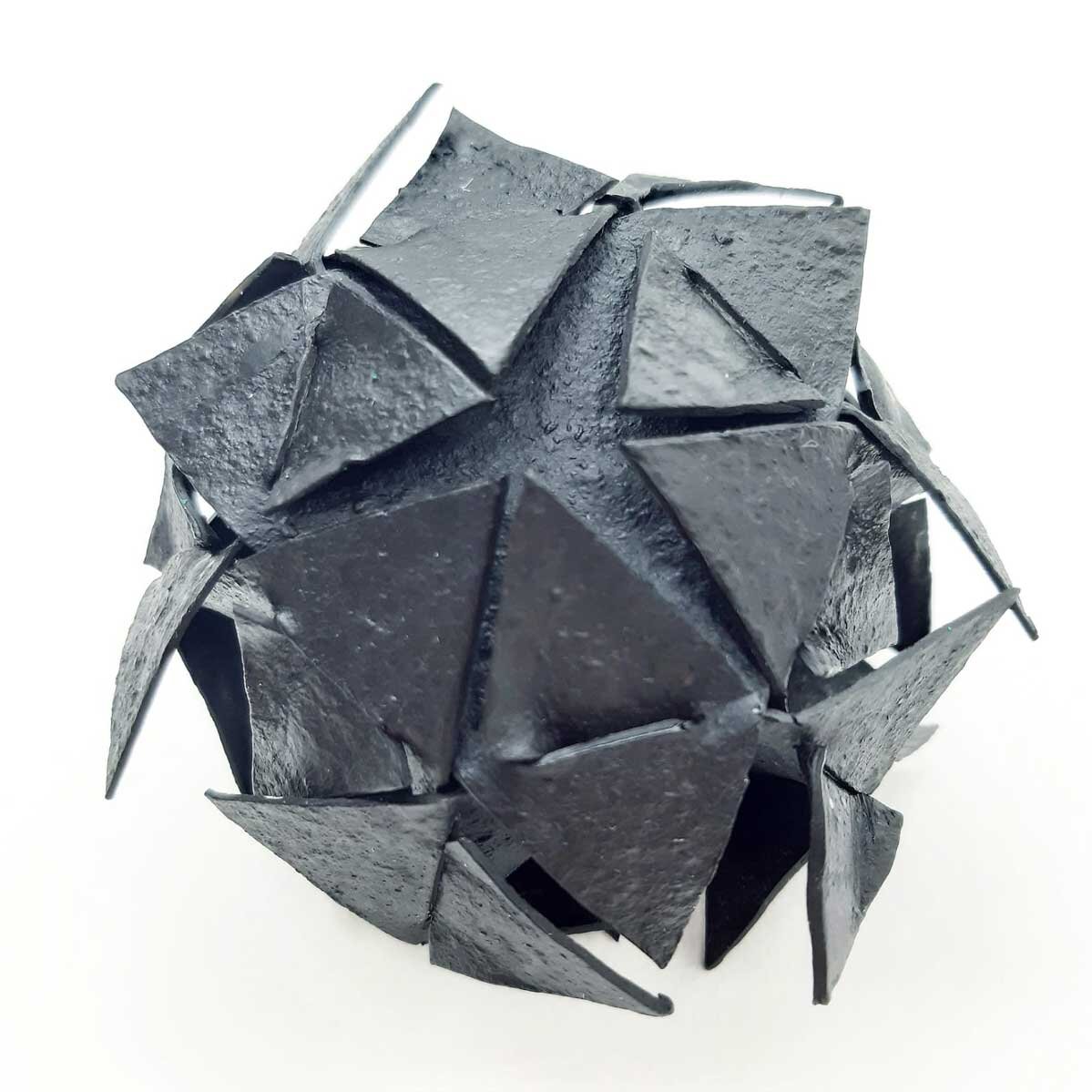The Lockdown Labs of Material Futures Bio-Designers
How six Bio-Designers from Central Saint Martins Material Futures course made DIY Biolabs at home during the lockdown.
Life as we know it has been turned upside down by the spread of the Coronavirus. Thousands have taken ill with many being hospitalised. The death toll is creeping ever upwards but, in spite of that, the people of the world are coming together by staying apart. Social distancing has become the new norm as country after country has declared lockdowns. Only essential workers are permitted to leave their homes, the people who keep us fed and treat those who need help. The unity and solidarity shown by many has been inspiring.
It's been a difficult time for all and everyone's been forced to face their own obstacles in the wake of the lockdown. I for one am meant to be entering the final term of my MA in Material Futures at Central Saint Martins, London. The reality of the outbreak began to dawn on me and my cohort when our plans to display at Milan Design Week were cancelled as the virus wreaked havoc in the north of Italy. It didn't take long for the virus to spread across Europe and the UK. Shortly before the order for the lockdown was announced, the university made the difficult, but sensible, decision to cancel our degree show and postpone our graduation. The university is to remain shut for the duration of the summer term.
Following the spirit of optimism shown by many countries the world over, how can we as designers, especially those of us who fall under the remit of biodesigners, continue our projects without access to our machines, workshops, specialist equipment or Bio-lab? Can we use our design thinking to find opportunity amidst the chaos? Within this article we will see how six biodesigners, myself included, are continuing their practise in lockdown. From building lab equipment out of wine bottles to Microbial Fuel cells in plant pots, we’ll explore Adhocism in practise.
Transmitting Nature - The Earth’s first words - Sean T Ross
For my project, I’m building a rudimentary biocomputer, exploring an alternative approach to how we traditionally produce digital technology.
Bio-lab set up by Sean T Ross, 2020, (c) the artist
Instead of using purely artificial materials, it takes advantage of mechanisms found in nature. The first is the power supply. The bacteria Geobacter Sulferreducens is capable of feeding off water pollutants while simultaneously secreting electrons as waste. These bacteria can be found in river mud and its electrons gathered with carbon veil electrodes. The harvested energy is then stored in a capacitor. The development of my own Microbial Fuel Cell has been made possible by the assistance of Professor Ioannis Ieropoulos of the Bristol BioEnergy Centre.
Microbial Fuel Cell (MFC) submerged in bacteria rich mud, by Sean T Ross, 2020, (c) the artist
The second mechanism makes use of the active potential in higher plants (vascular plants that transport water and minerals through lignified tissues). When we interact with a plant, we alter this active potential, shifting the micro-voltage inside. Using electrodes, we can detect these small spikes, much like how an ECG machine works to detect fluctuations in heartbeat. This micro-voltage is then amplified to >0.5 Volts and goes into the base of a transistor, turning it on. In binary terms, it shifts it from 0 to 1.
A calethea ornata connected to electrocardiogram pads to detect shifts in its active potential, by Sean T Ross, 2020, (c) the artist
Before the outbreak of COVID19, I intended to build a Biocomputer that used the two previously mentioned mechanisms to control a screen made out of Bioluminescent bulbs. I envisioned the final output being a large installation that somewhat resembled a desktop computer but far larger and with only a 4 X 5 pixel screen. However, our current situation forced me to reconsider my approach. Without access to the bio lab it would be infinitely harder to create my bioluminescent bulbs and without access to workshops, I can’t build the structure.
After a few days of inactivity, I was able to eventually shake off my initial despondency and view the situation as an opportunity to create something stronger. Instead of using my bio-mechanism to create light, I’m going to use them to make sound. By connecting them to a DIY radio transmitter, the symbiotic relationship between the plant and mud will begin to create radio waves. These radio waves will be used to transmit sound but hidden within it will be a stochastic binary. The longer it runs, the more likely it is that that binary will form sequences that resemble letters and words. The binary acts as a translation device, decoding the Earth’s first words.
The way I build this new version of my project will have to be much simpler than my initial aspirations. My Microbial Fuel Cells are made from terracotta tubes that were marketed as “fish egg caves”. These are wrapped and stuffed with carbon veil, one wire attached on the outside, the other on the inside, and then each is unceremoniously dumped into a plastic plant pot filled with mud. My Radio Tower will be built using timber and in modular sections so that I don't have to leave it as a permanent feature in my front courtyard. Once assembled, my local community should be able to tune in from isolation and listen to the Earth.
The Manufacturing Microbes - Sarah Graham
My project The Manufacturing Microbes is an exploration of the potential of bacterially-derived composites to replace petroleum-based synthetic materials in fashion and sportswear.
Bio-lab setup by Sarah Graham, 2020, (c) the artist
I am working with a material that is created by a combination of two bacterial processes. The first is a calcite mineral precipitated by bacteria commonly found in soil called Sporoscarcina pasteurii. The second is a biopolymer excreted from another bacteria, Bacillus lichenformis. The material is formed by growing these in nano-layers on a substrate material. This process was developed by research at Dr. Anne Meyer’s lab in the University of Rochester. It is inspired by the natural formation of nacre, the exceptionally tough material found on the inside of mussel shells which also gives it a pearlescent finish.
I am using eyewear as a designed object to convey the potential for this material. Mother of pearl eyewear frames have been produced for decades, but harvesting the natural source is detrimental to the oceans and restrictive in shape and size of shells. The synthetic alternatives are achieved by using highly toxic and difficult to break down materials such as epoxies and thermoplastics. This bacterial composite has the durable properties of synthetics with the non-toxic compostable benefit of natural nacre.
Poring plates by Sarah Graham, 2020, (c) the artist
Prior to going into isolation, I was working in the Central Saint Martins Grow Lab, experimenting with growing the layers on different material substrates to create my final pieces. My intent for the degree show was to have a finished pair of glasses fabricated from the material, along with a built system of growing these glasses. The public would be able to view the layers being built up by the bacteria in real time and get an appreciation for the process.
Since we have now all moved into isolation and are being asked to engage in distance learning and making from our homes, we have had to adjust not only our expectations of our graduating year but also how we work.
Designing with living systems is complicated in isolation as you need specific laboratory equipment and a sterilized working area. I have always been into upcycling and repurposing things, so I found it fun to create some of the laboratory tools I need from objects around my house. For example, the vacuum filter I created is made from wine and whiskey bottles and the incubator from a heated blanket pad and a Styrofoam cooler.
An interesting element of this system of production has been highlighted by the lockdown. The location of the manufacturing lab can exist non-invasively in relation to other industrial fabrications, and the components used to grow these bacteria can be found in a variety of industrial waste streams. For example, urea, a chemical found in urine, is one of the ingredients used in the calcite formation. I have built the vacuum filter to process urea from my own waste, something that under normal circumstances I wouldn’t have found necessary, but it shows that systems could be built to utilize otherwise overlooked resources. It will be interesting to see how the world emerges after the Coronavirus Pandemic has passed. As so many economic systems have crashed, will the global economy move towards more decentralized systems of making? Will we see the beginning of more equitable economic development for the future?
Glycerol sample by Sarah Graham, 2020, (c) the artist
Second Growth: Seashells - Seonmin Kang
Second Farming is an investigation into the original designs of all natural creatures. Using material science and emerging technologies, I am reforming waste seashells into new vessels, paying homage to their original forms.
Bio-lab setup by Seonmin Kang, 2020, (c) the artist
This project requires three important pieces of equipment; an electronic furnace, air compressor and a ceramic 3D printer. Thankfully, I was able to build all three components before London went into lockdown. I’d also managed to accumulate a large stockpile of waste seashells thanks to the help of the Wright Brothers London based seafood restaurants, my collaborators on this project.
Materials shelf by Seonmin Kang, 2020, (c) the artist
As far as the process is concerned, I begin by incinerating the seashells in the furnace and then transferring them into airtight jars. This process transforms the seashells into a complete powder after around 15-20 days. For the second part, I mix the powder, Ca (OH)₂, with water, forming it into a clay like texture. Lastly, I load the transformed material into the ceramic extruder on my custom built 3D printer. The extruder is connected to an air compressor which can be controlled manually using a relief gauge. This means the extruder can be synchronized with the speed of the 3D printer. Building and controlling the 3D printer has been the most challenging aspect of the project so far but I am now able to focus on discovering the structure and principles through which the seashells are originally grown. I hope to channel this beauty into my seashell vessels, recovering the original designs of the natural material.
The current pandemic has caused many to become lethargic and I too have suffered from this. Spending all day at home has started to make every day feel like a holiday! These circumstances make it difficult to focus on my work at all and the days seem to blur together. My solution to this was to make a work schedule in which I alternated the times I’d do my household tasks each day. This made the days distinguishable again! It helped me get my body clock back in order and to wake up at a regular hour. I felt like I got more time out of my work day. There are no limited opening hours when you work from home. I tend to spend time after 6pm doing my more academic studies like researching and reading books. Growing and caring for my plants has also helped me. It helps refresh my brain and offers me inspiration as I work.
Material Samples by Seonmin Kang, 2020, (c) the artist
A New Delicacy - Sorawut Kittibanthorn
My “A New Delicacy” project proposes an alternative way to manage feather waste from slaughterhouses by converting its nutrient composition into a new edible product.
Bio-lab setup by Sorawut Kittibanthorn, 2020, (c) the artist
Chemically, chicken feathers are composed of approximately 91% protein (keratin) which contains up to eight types of essential amino acids that we require as part of a healthy diet. This ultimate protein source could function like other protein sources. Moreover, it improves the digestive absorption of fat-soluble vitamins, especially for children and the elderly, helps prevent prostatic hyperplasia and also very high antioxidant capacity comparable to strawberries.
It has been proven that keratin protein from feathers is safe for general consumption in our daily diet. This project will fundamentally change our food system by providing a sustainable food choice for meat eaters, adding significant value to feather waste and reducing a highly problematic waste stream.
The Future of the Big Mac by Sorawut Kittibanthorn, 2020, (c) the artist
One of the challenges of my research was the conversion of feathers into hydrolysed keratin, keratin - a fibrous protein with a good amino acid profile. Our human body cannot absorb the pure form of keratin but it can absorb hydrolysed keratin. There are a few methods to produce hydrolysed keratin, but only enzymatic processes proved to be environmentally friendly and able to convert wasted feathers to the desired hydrolysed keratin. The enzymes produced by such organisms, called Keratinase, will destroy the chemical bonds in keratin's pure form, producing high quality hydrolysate with better digestibility and bioavailability and maximal retention of liable amino acids.
Recently, the COVID-19 outbreak has prevented me from being able to extract the protein in the lab. In order to overcome this barrier I need to find a material substitution for the keratin hydrolysate (the protein extracted from the waste feathers). Fortunately, there is a scientific paper where they were investigating the side effects of keratin hydrolysate consumption in humans. According to the research [J Hum Nutr Food Sci 2(4): 1047.], the result found that the hydrolysate is safe for human consumption, and also the researchers stated that this is no different to isolated whey or soy protein-based supplements.
The keratin hydrolysate has excellent solubility, amino acid profile, emulsifying and foaming properties comparable to protein ingredients such as whey protein isolate. Consequently, whey protein isolate is a perfect substitution to continue my research because of its material properties, nutrients and forms which allow me to apply it for my further investigation as turning this protein source into food products.
Everyday Caviar by Sorawut Kittibanthorn, 2020, (c) the artist
My workspace is filled up with over ten different binders, food additives, some basic lab equipment and plenty of kitchenware, all of which is available online and delivery is accessible. I believe that this ad-hoc setup will be good enough for experimenting with food textures and forming new creations from waste keratin.
Despite the complications thrown up during these difficult times, I’ve been able to remain optimistic. It has led me to be more adaptive in my practise and use creativity to find solutions that allow me to carry on with my research. I believe that my adaptable lab/kitchen workspace will facilitate me in creating an edible product, made from edible feathers, that can contribute to a brighter future within the food industry.
Bio-mimicking strength - Carolina Perez Leon
The core of my project explores how strong materials found in nature can be long-lasting and biodegradable, and by analysing the chemical and mechanical components of this material, I hope to find a way in which the materials longevity can be manipulated at will.
Bio-lab setup by Carolina Perez Leon, 2020, (c) the artist
For this purpose, I have chosen the limpets teeth, one of the strongest materials in the natural world. This incredible material, which comes from such a humble mollusc, could hold vast possibilities! Imagine if these possibilities could be harnessed on a large scale instead of being hidden from the human eye.
A week before universities closed, I was granted access to the laboratories at Imperial College London to produce a sample of the material by implementing a 3D biomineralization of gels in collaboration with Professor Eduardo Saiz and Muhammed Maktari from the school of Material Science at Imperial College London. The project was supposed to develop from this point depending on the experiment findings.
The issues presented by Covid-19 in relation to my work might have been initially offsetting, causing me to consider if my work had been made redundant by this worldwide crisis. However, I decided to instead embrace change, finding inspiration in the imminent nature of evolution and continuing to develop and adapt my work to the surroundings I find myself in.
I am lucky to have a working space at home, appropriate for both research and physical experimentation and my plants are certainly happier now that I am taking better care of them. Of course, the project would require lab testing at some point in order for me to be able to produce a material sample.
Adhoc Bioreactor V. 1 by Carolina Perez Leon, 2020, (c) the artist
The next step was all about deciding how the project should take shape without access to a lab. I decided to build a bioreactor using materials and objects that I currently have at home or that were easily accessible to order on the internet, as well as second-hand objects or waste materials that I could repurpose. My collaborators are on board to keep working on the project and found the concept of a homemade bioreactor interesting!
The thinking process of how I should build the bioreactor took me back to basics. It opened my eyes to systems that I already have inside my living space, such as the daily interaction with the opening and closing mechanism of bottles and jars to the compression systems of air tight containers, simple things that we take for granted. Consequently I realise that I can implement these systems in my project. The idea of perfection and clean lines that define my personal taste has now come into second place, as I have started to appreciate the imperfections and the quirky details that only come from an artisan approach.
Adhoc Bioreactor V. 2 by Carolina Perez Leon, 2020, (c) the artist
From Bio-waste to Fashion - Riina Õun
I am working on developing animal and plastic free leather alternative, suitable for vegans. SCOBY leather (based on the symbiotic colony of bacteria and yeast) is a composite material in its own right. It’s made of the bacterial cellulose growing on top of a kombucha drink during the fermentation process. Rather than taking the SCOBY and using it straight off kombucha, I have developed a different process. The result is a more uniform, durable and attractive material with advanced qualities.
Bio-lab Setup by Riina Õun, 2020, (c) the artist
Kombucha SCOBY can be grown at home or, in my case, collected as the waste from local kombucha producers around London. What is special about this material is that the bacterial cellulose gets blended up, several ingredients are added to enhance the smell, flexibility and strength. It can be grown to any size, is pretty durable for short term purposes and can be home-composted guilt-free. At this point, I envision its use for shorter-term fashion accessories replacing plastic and PVC-based fake leather.
It is currently a work in progress but my future intentions were to develop the waterproof coating for the material, working with chemists and physicists in the lab at the Loughborough University and to enhance the strength of the material. I was also planning to collaborate with a perfumer creating a scent to further improve the smell of the material.
Due to the lockdown situation the lab had to move into my kitchen. I was unable to collaborate with a perfumer, so instead started mixing the essential oils at home to create a perfume – according to the internet it's not that hard at all, once you have all the ingredients. Additionally, I am lucky to have my own work studio to work from, even though it is not near where I live. What has changed is commuting to the studio – it's just under a two-hour hike from my home, which substitutes for a good workout there and back, avoiding the public transport. Luckily most ingredients can nowadays be easily ordered online. I think it's important not to dismiss the emotional challenges this current situation presents as I feel these ”invisible” influences have affected me the most. But despite the fear, confusion and self-doubt inflicted by the mass media, the projects must go on and the recent sunny Spring weather in London helps to keep spirits high, even if it can only be enjoyed in isolation.
SCOBY Leather texture sample by Riina Õun, 2020, (c) the artist
SCOBY Leather 3D shape experiment by Riina Õun, 2020, (c) the artist




